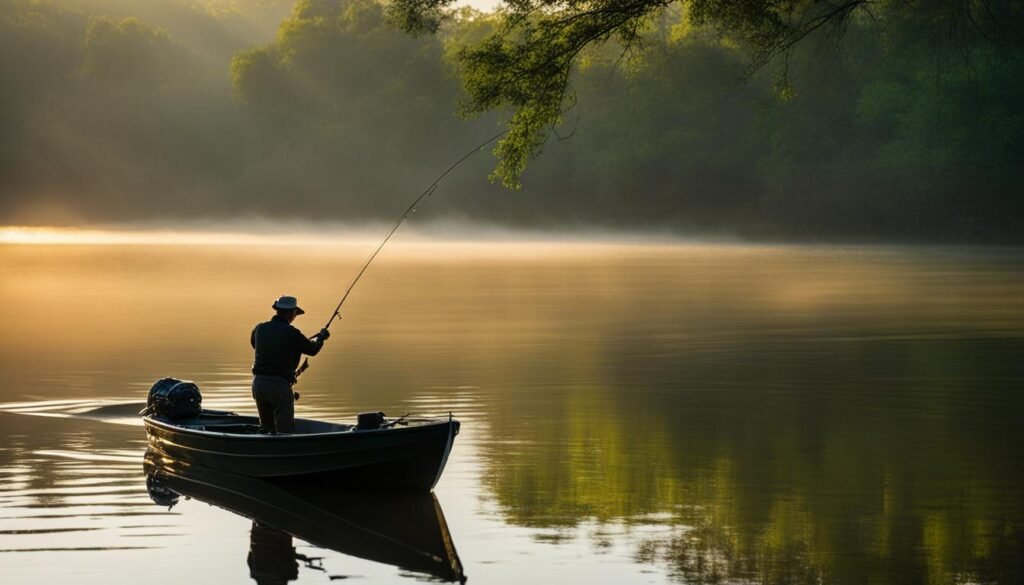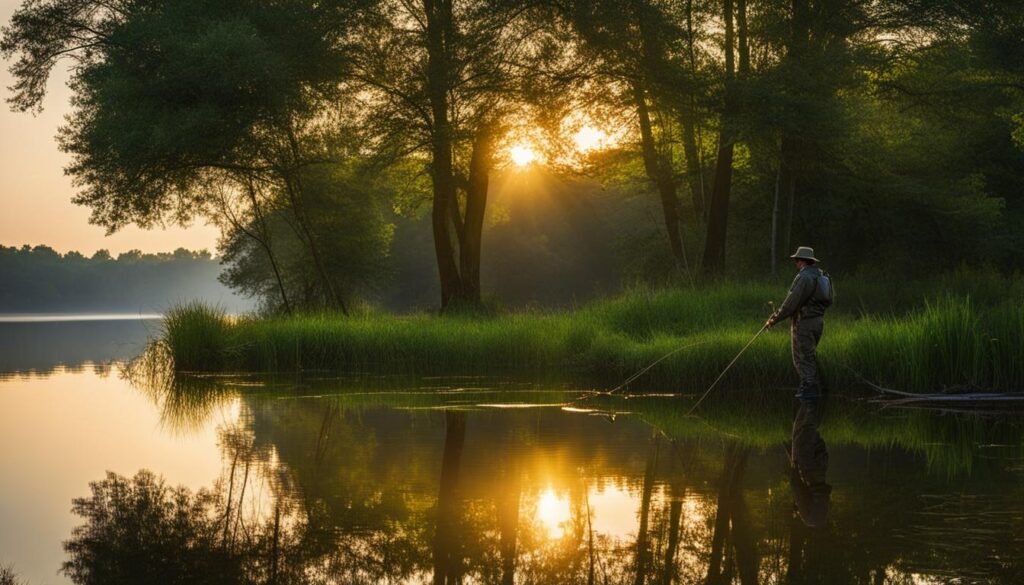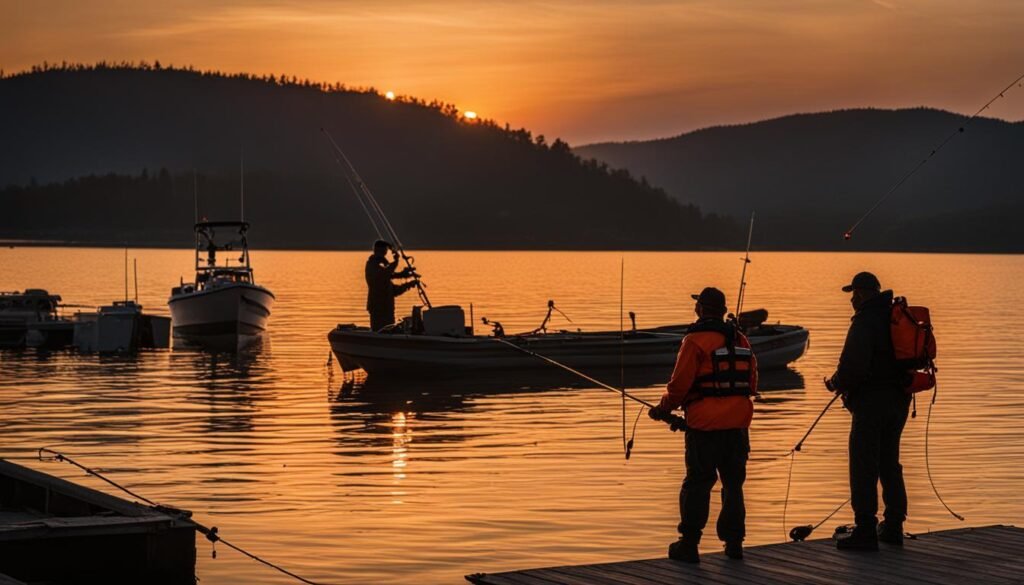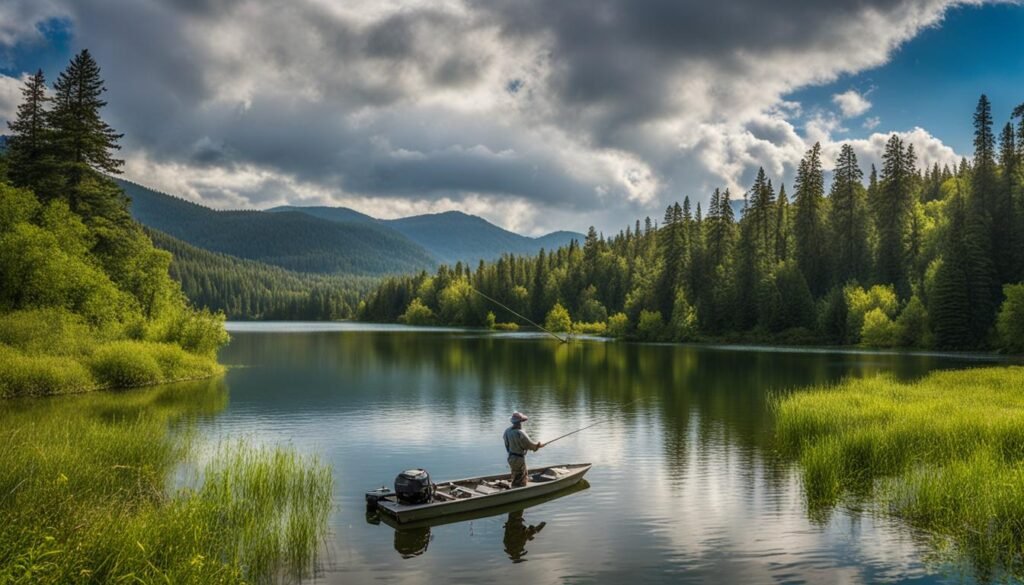Welcome to the world of bass fishing! Whether you’re just starting out or looking to improve your skills, this comprehensive guide is here to help. From the basics of fishing tackle to essential tips and gear advice, you’ll find everything you need to get started on your bass fishing journey. So grab your rod and let’s dive in!
Why Choose Bass Fishing as a Beginner Angler
Bass fishing is an appealing choice for beginner anglers for several reasons. Firstly, bass are abundant in many lakes and rivers across the United States, making them accessible to anglers of all skill levels. Whether you’re fishing in a local pond or a renowned bass fishing destination, you’re likely to find bass in the area, giving you ample opportunities to practice and improve your skills.
Secondly, bass are known for their aggressive strikes and strong fights, providing an exciting and rewarding experience for beginners. When you hook into a bass, get ready for a thrilling battle as they make powerful runs and put up a good fight. It’s this adrenaline-pumping action that makes bass fishing so captivating for novice anglers.
Lastly, bass fishing offers a wide range of techniques and lures, allowing beginners to experiment and find their preferred fishing style. Whether you enjoy casting and retrieving artificial lures or using live bait, there is a technique that suits your preference. Additionally, the variety of lures available, such as crankbaits, spinnerbaits, and soft plastic worms, allows you to customize your approach and adapt to different fishing conditions.
Essential Gear for Beginner Bass Fishing
When it comes to beginner bass fishing, having the right gear is essential for a successful and enjoyable fishing experience. Investing in quality equipment will not only improve your chances of catching bass, but also enhance your overall fishing experience.
Beginner Bass Fishing Rods: A good fishing rod is the foundation of your gear. Look for a medium-heavy or medium-action rod that is specifically designed for bass fishing. These rods have the right balance of flexibility and strength to handle the weight and fight of bass. Brands like Shimano, Abu Garcia, and St. Croix offer a wide range of beginner-friendly bass fishing rods to choose from.
Beginner Bass Fishing Tackle: Having a variety of fishing tackle is important to adapt to different fishing conditions. Make sure to have a selection of hooks, sinkers, and bobbers in different sizes to accommodate various bait presentations and fishing techniques. Brands like Gamakatsu, Eagle Claw, and Mustad are trusted names for high-quality fishing tackle.
Beginner Bass Fishing Gear: In addition to rods and tackle, there are a few other essential gear items that every beginner bass angler should have. These include a reliable spinning reel to pair with your rod, a tackle box or bag to organize your tackle, a fishing line with appropriate pound test strength, and a landing net to safely land and handle caught fish.
No matter which brand or specific gear you choose, it’s important to select items that suit your personal preferences and fishing style. As you gain more experience and knowledge, you can upgrade and expand your gear collection to meet your evolving needs.
Basic Bass Fishing Techniques for Beginners

As a beginner in the world of bass fishing, it’s important to start with simple and effective techniques that will help you get acquainted with the sport and increase your chances of success. By mastering these fundamental techniques, you’ll be well on your way to becoming a skilled bass angler.
Casting and Retrieving Artificial Lures
One popular technique for beginners is casting and retrieving artificial lures. This involves using lures such as crankbaits, spinnerbaits, and soft plastic worms. To start, cast your lure into the water, allowing it to sink to the desired depth. Then, retrieve the lure by reeling it in steadily, imitating the movement of a real baitfish. This technique is effective in enticing bass to strike and can be used in a variety of fishing situations.
Using Live Bait
Another effective technique for beginners is using live bait. This can include worms or minnows, which can be rigged on a bobber rig or a bottom rig. When using a bobber rig, attach the bait to a hook and suspend it below a bobber, allowing it to float at the desired depth. When using a bottom rig, attach the bait to a hook and let it rest on the bottom of the water. This technique is great for enticing bass that are in search of an easy meal.
Experiment and Observe
As a beginner, it’s important to experiment with different techniques and observe the behavior of the bass in your fishing location. Try different types of lures, vary your retrieval speeds, and adjust the depth at which you’re fishing. Pay attention to the reaction of the bass and take note of what works best for you. Each fishing location may require a slightly different approach, so it’s important to adapt and learn from your experiences.
Understanding Bass Behavior and Habitat

To become a successful bass angler, it’s important to understand the behavior and habitat of bass. Bass are known to be territorial and prefer areas with cover such as weeds, fallen trees, and rocks. They also prefer areas with structure such as points, drop-offs, and submerged vegetation. By studying the environment and observing the behavior of bass, you can increase your chances of finding and catching them.
When it comes to bass fishing, knowing where to find them is half the battle. Bass are often found near structures like weeds, fallen trees, and rocks, where they can find cover and ambush their prey. They also prefer areas with structure, such as points, drop-offs, and submerged vegetation, as these provide them with a sense of security and a hunting advantage. By casting your bait near these areas, you can increase your chances of attracting bass and getting a strike.
Another important aspect of understanding bass behavior is knowing their feeding patterns. Bass are opportunistic feeders and tend to be most active during dawn, dusk, and cloudy days. They are known to be particularly active during feeding periods, which can occur after a rainstorm or during a full moon. By timing your fishing trips accordingly, you can increase your chances of catching bass.
Tips for Catch and Release Fishing

Catch and release fishing is a crucial practice for the conservation of bass populations. As a beginner bass angler, it’s important to follow these tips to ensure the survival and well-being of the fish.
Use Barbless Hooks
When practicing catch and release, using barbless hooks is highly recommended. Barbless hooks are easier to remove from the fish’s mouth, minimizing stress and injuries. Remember, the goal is to release the fish unharmed.
Carefully Remove the Hook
Whether you use barbless hooks or not, it’s essential to quickly and carefully remove the hook from the fish’s mouth. Use a pair of pliers or a hook remover tool to ensure a smooth removal process.
Wet Your Hands
Before handling the fish, wet your hands with water. This helps protect the fish’s slime coat, which is a natural defense mechanism. Avoid using towels or dry hands as they can remove the slime coat and potentially harm the fish.
Support the Fish Properly
When releasing the fish, it’s vital to support it properly. Place your hands under the fish’s belly and hold it gently but firmly. Avoid squeezing or putting excessive pressure on the fish, as this can cause internal injuries.
Release the Fish Safely
When releasing the fish back into the water, gently place it in the water facing the current or in the direction it was facing before being caught. Allow the fish to regain its strength and swim away on its own.
Safety Tips for Beginner Bass Fishing

Safety should always be a priority when engaging in any outdoor activity, including bass fishing. Follow these tips to ensure a safe and enjoyable fishing experience:
1. Wear a Life Jacket
When fishing from a boat, always wear a properly fitted life jacket or personal flotation device. This will help keep you afloat in case of an accident or unexpected fall.
2. Be Aware of Your Surroundings
Pay attention to your surroundings and watch out for potential hazards such as rocks, submerged logs, or other obstacles that may pose a risk. Stay alert and navigate carefully.
3. Protect Yourself from the Elements
Use sunscreen to protect your skin from the sun’s harmful rays, especially during long fishing trips. Apply bug spray to keep mosquitoes and insects at bay. Additionally, wear protective clothing such as hats, sunglasses, and long sleeves to shield yourself from the elements.
4. Stay Hydrated and Take Breaks
Drink plenty of water to stay hydrated throughout your fishing trip. It’s important to take regular breaks, especially on hot days, to rest and recharge. Being well-hydrated and rested will help you stay focused and prevent fatigue.
Finding the Best Fishing Spots for Bass
Finding the best fishing spots for bass can be a challenge, especially for beginner anglers. But fear not, we’ve got you covered. Here are some tips to help you locate those prime bass fishing spots and increase your chances of landing a big one.
1. Research local lakes, rivers, and reservoirs: Start your search by researching the bodies of water near you that are known for their bass populations. Look for lakes, rivers, or reservoirs that have a reputation for being great bass fisheries. You can find information about these fishing hotspots through various online resources, fishing apps, or by simply talking to experienced local anglers.
2. Consider structure and cover: Bass are often found near areas with good structure and cover. Look for areas such as weed beds, submerged trees, and rocky shorelines that can provide shelter and protection for the fish. These areas not only attract bass but also provide ample opportunities for them to ambush their prey. Keep an eye out for any irregularities in the water that indicate underwater structure or cover.
3. Observe the water: Take some time to scan the water surface for any signs of bass activity. Look for jumping fish, boils, or birds diving into the water, as these can be indicators of bass feeding activity. Bass are known to be opportunistic feeders, so being able to identify their feeding patterns can help you find the best spots to cast your line.
4. Explore different spots: Don’t be afraid to explore different fishing spots in your area. Bass can be found in various locations within a body of water, so it’s important to move around and try different spots. Use a boat or kayak to access areas that are challenging to reach from the shore. Remember, the more you explore, the more likely you are to discover those hidden gems where bass are lurking.
Tips for Handling and Cleaning Your Catch
Once you’ve caught a bass, it’s important to handle and clean it properly. Following these tips will ensure the quality and safety of your catch:
- Wet your hands: Before handling the fish, wet your hands to protect its slime coat. This helps maintain the fish’s skin health.
- Use a net: Safely land the fish using a net to avoid causing injury to yourself or the fish. This also prevents the fish from flopping around and potentially damaging itself.
- Cleaning the fish: When cleaning the fish, remove all entrails carefully. Rinse the fish thoroughly to ensure it is free from any remaining debris.
- Follow local regulations: Be aware of local size limits and bag limits for bass. It’s important to comply with these regulations to contribute to the conservation efforts of fish populations.
- Dispose of waste properly: Dispose of any waste, such as fish entrails, in a responsible manner. This helps keep the environment clean and protects other aquatic life.
Fishing Regulations and Ethics
Before you go bass fishing, it’s important to familiarize yourself with the fishing regulations in your area. Each state has specific rules and regulations that govern fishing licenses, bag limits, and size limits for different species of bass. To ensure a smooth and legal fishing experience, make sure to obtain the necessary fishing license and adhere to the regulations set forth by your state.
Additionally, practicing ethical angling is essential to protect the bass population and contribute to a sustainable fishing environment. Respect other anglers by giving them sufficient space and avoiding encroachment on their fishing spots. Follow catch and release practices to conserve bass populations and ensure their long-term survival. When releasing a bass, handle it gently and carefully to minimize stress and potential injuries.
Resources for Beginner Bass Fishing
As a beginner in the world of bass fishing, you have a wealth of resources at your fingertips to help you learn and improve your skills. One option is to consider hiring a fishing guide who can provide personalized instruction and guidance tailored to your needs. A skilled guide can take you to the best fishing spots, show you effective techniques, and offer valuable tips that will accelerate your learning process.
Another great resource for beginners is local fishing clinics and workshops. These events provide an opportunity to connect with experienced anglers in your area and learn from their expertise. You can gain valuable insights into beginner bass fishing techniques, tips, and strategies that will help you become a more successful angler.
Don’t forget about the power of the internet! Online resources such as YouTube videos and fishing forums are filled with a wealth of information from seasoned anglers. You can watch instructional videos that demonstrate beginner bass fishing techniques step-by-step, read articles, and engage in discussions with other anglers to expand your knowledge.
Looking For More Bass Content?
Check out our other articles and guides to learn more about bass fishing

